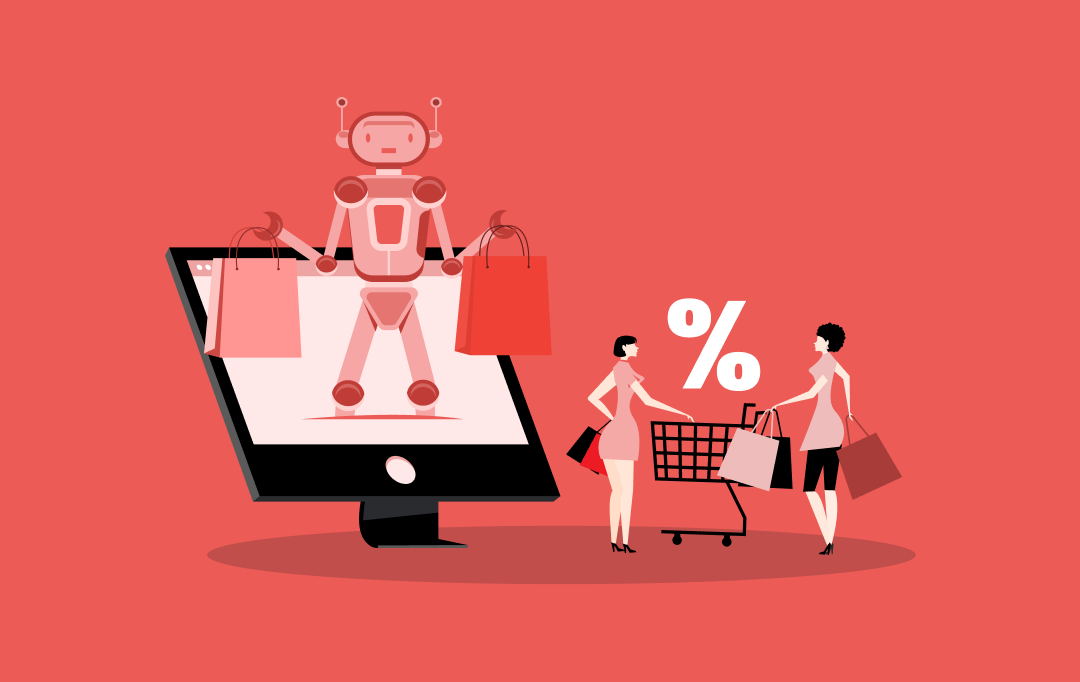- What is Green AI?
- Real-Life Examples and Use Cases of Green AI in Different Industries
- Green AI Application in Healthcare
- Green AI Application in FinTech
- Green AI Application in Agriculture
- Green AI Integration in Education
- Green AI in Data Centers and IT Services
- Green AI Technology in the Energy Sector
- Green AI Integration in Manufacturing
- Green AI Application for Transportation
- Benefits of Green AI Technology for Businesses
- Cost Savings
- Enhanced Innovation
- Regulatory Compliance
- Positive Brand Image
- Enhanced Productivity
- Improved Decision-Making
- Resource Optimization
- Environmental Conservation
- How to Integrate Green AI in Business?
- Identify Sustainability Goals
- Assess Data Availability
- Develop AI Models
- Integrate AI Solutions
- Monitor and Evaluate Performance
- Green AI Integration in Business: Challenges and Solutions
- Data Quality and Availability
- Ethical and Regulatory Considerations
- Talent and Skills Gap
- Elevate Your Green AI Initiatives with Appinventiv
- FAQs
Degradation of the natural environment, resource depletion, and climate crisis are intricate phenomena requiring innovative and advanced solutions. This is where Green AI applications come into play. Green AI focuses on leveraging artificial intelligence (AI) techniques to promote environmental conservation and sustainable development. From optimizing energy usage to revolutionizing agriculture, green artificial intelligence is a powerful tool in the world’s fight against climate change and ecological degradation.
According to MarketsAndMarkets research, the global green technology and sustainability market is valued at $28.6 billion in 2024 and is poised to reach $134.9 billion by 2030, expanding at a CAGR of 29.5% during the forecast period (2024-2030).

Green AI for sustainability is not just about robots and sci-fi fantasies; it is about using data and algorithms to make smarter decisions – decisions that can profoundly impact the planet we call home. Imagine a world where buildings intelligently adapt to our needs, where renewable energy sources seamlessly integrate into our power grids, and where agriculture thrives with minimal environmental impact. This is not just a distant dream; it is a vision that AI Green is helping to bring to life.
Now let’s delve deeper into how green artificial intelligence is helping to tackle sustainability challenges across various sectors.
What is Green AI?
Green AI, a branch of artificial intelligence, refers to the applications of AI techniques and technologies to address environmental and sustainability challenges. It focuses on using AI to reduce the environmental impact of technologies, promote eco-friendly practices, optimize resource usage, and mitigate the effect of human activities on the environment.
Green AI encompasses a wide range of applications, including energy efficiency, renewable energy integration, sustainable agriculture, conservation biology, waste management, and more. By leveraging the power of AI for environmental conservation and sustainable development, Green AI aims to contribute to a greener and more sustainable future for our planet.

Recognized as a strategic initiative by entities like the European Commission and the UK Government, Green AI is poised to tackle pressing concerns of climate change and environmental degradation.
Their efforts to promote Green AI include substantial investments, such as £200 million towards funding 1,000 new PhD places over the next five years to study AI’s role in making industries more sustainable. Additionally, initiatives like the AI Sector Deal have fostered partnerships between government agencies, research institutions, and industry players to drive sustainable innovation. These partnerships have led to initiatives like global food waste reduction efforts and the use of algorithms to combat the illegal wildlife trade.
There are many other ways that Green AI applications can help address sustainability challenges. Let’s explore various use cases of Green AI across different sectors:
Real-Life Examples and Use Cases of Green AI in Different Industries
Green AI, the fusion of AI and environmental sustainability, has the potential to revolutionize various industries by promoting eco-friendly practices. Here are some notable use cases of Green AI across different sectors:

Green AI Application in Healthcare
AI can help healthcare facilities optimize waste management practices to reduce environmental impact. By analyzing data on waste generation, segregation, and disposal, AI algorithms can identify opportunities for waste reduction, recycling, and proper disposal, ensuring compliance with environmental regulations.
Example: The University of Pittsburgh Medical Center (UPMC) implemented an AI-driven waste management system to improve efficiency and sustainability. The medical center uses Green AI to analyze data on waste generation patterns and disposal methods, identifying opportunities to reduce waste and increase recycling rates. It results in significant cost savings and reduced environmental impact.
Green AI Application in FinTech
In the FinTech industry, leveraging Green AI for fraud detection and risk management contributes to sustainability by reducing financial fraud, which in turn minimizes economic losses and resource wastage. AI algorithms can identify suspicious patterns and anomalies indicative of fraudulent activity, enabling organizations to mitigate risks and prevent financial losses.
Example: PayPal utilizes AI-driven fraud detection algorithms to identify and prevent fraudulent transactions. By analyzing transaction patterns, user behavior, and other contextual data, the payment app’s AI system can detect and flag potentially fraudulent activities, protecting both the company and its users from financial fraud.
Also Read: How AI in FinTech industry is wooing millennials
Green AI Application in Agriculture
AI-powered precision farming techniques can optimize resource usage in agriculture, including water, fertilizers, and pesticides. By analyzing data from satellite imagery, soil sensors, and weather forecasts, AI algorithms can provide farmers with insights to optimize irrigation schedules, target fertilizer applications, and minimize environmental impact.
Example: Microsoft’s FarmBeats project leverages IoT and AI features to promote sustainable agriculture. AI enhances irrigation, fertilization, and pest control processes, thereby minimizing resource consumption and environmental footprint by providing data-driven insights to farmers.
Related Article: Implementation of AI in Agriculture
Green AI Integration in Education
Green AI integration in education can drive sustainability by optimizing resource allocation and reducing environmental impact. Through personalized learning experiences tailored to individual student needs, Green AI-powered educational platforms minimize unnecessary resource consumption associated with traditional one-size-fits-all teaching methods. By analyzing student performance data, learning styles, and preferences, Green AI ensures efficient utilization of teaching resources, such as classroom space and materials, thus reducing waste and promoting sustainability within educational institutions.
Additionally, by streamlining scheduling processes and optimizing resource allocation, Green AI contributes to energy conservation and operational efficiency, further advancing sustainability goals in the education sector.
Example: Duolingo, a language learning platform, uses AI algorithms to personalize users’ learning experiences. The platform adapts the difficulty level of exercises and lessons based on individual performance, allowing users to learn at their own pace.
You may like reading: 12 Ways AI in Education is Transforming the Industry
Green AI in Data Centers and IT Services
Data centers consume significant energy due to their constant operation and cooling requirements. A single data center consumes as much electricity as equivalent to 50,000 homes. Green AI technology can optimize energy usage within data centers by dynamically adjusting cooling systems, workload distribution, and resource allocation based on real-time data analytics.
Example: Google’s DeepMind AI has been deployed to optimize the cooling systems in their data centers. DeepMind uses AI algorithms to analyze data from thousands of sensors, reducing energy consumption for cooling by up to 40%.
Green AI Technology in the Energy Sector
AI-powered predictive maintenance can optimize the performance of renewable energy assets such as solar panels and wind turbines. By analyzing data from historical maintenance records and sensors, AI algorithms can predict when components are likely to fail, enabling proactive maintenance and minimizing downtime.
[Also Read: Renewable Energy Software: Why It Matters for Businesses and How to Build It Right]
Example: GE Renewable Energy utilizes AI algorithms to predict turbine failures before they occur. Leveraging the power of Green AI technology, GE can identify potential issues on wind turbines and dispatch maintenance teams to address them, thereby maximizing turbine uptime and energy production.
Green AI Integration in Manufacturing
AI in manufacturing can optimize processes to reduce energy consumption and environmental footprint. Green AI practices analyze data from various sensors and production equipment, identifying opportunities for energy savings. This analysis includes optimizing equipment settings, scheduling production during off-peak hours, and identifying areas for process improvement.
Example: Siemens employs AI algorithms to optimize energy usage in manufacturing facilities. By analyzing real-time data from sensors installed throughout the production process, Siemens can identify inefficiencies and implement energy-saving measures, leading to reduced energy consumption and lower carbon emissions.
You may like reading: How AI Carries an Impact On Your Business, Across Domains?
Green AI Application for Transportation
AI algorithms can optimize routes for electric vehicles (EVs) based on factors such as traffic conditions, charging station availability, and battery range. By considering these variables, AI can plan the most energy-efficient routes, minimizing the need for charging stops and reducing overall energy consumption.
Example: Tesla uses AI-driven green initiatives to optimize routes for its electric vehicles and address sustainability challenges. The system factors in real-time traffic data, charging station locations, and the vehicle’s current battery level to recommend the fastest and most energy-efficient route to the destination, helping drivers maximize their EV’s range.
Related Article: AI in Transportation: Benefits, Use Cases, and Examples
Benefits of Green AI Technology for Businesses
Green artificial intelligence has numerous benefits for businesses, ranging from cost savings to enhanced performance. Here are some of the key advantages:

Cost Savings
Optimizing resource usage leads to significant cost savings for businesses across industries, making operations more sustainable and economically viable.
Enhanced Innovation
Green AI drives innovation by stimulating the development of tech advanced solutions that promote sustainability and address environmental challenges.
Regulatory Compliance
With the integration of Green artificial intelligence in business processes, organizations can ensure adherence to industry-specific regulations and compliances, mitigating the risk of legal penalties.
Positive Brand Image
Leveraging Green AI applications demonstrates a commitment to corporate responsibility and sustainability. It improves brand reputation and attracts environmentally conscious consumers.
Enhanced Productivity
By automating tasks and processes, Green AI technology improves productivity and efficiency, allowing organizations to achieve more with fewer resources.
Improved Decision-Making
AI-driven insights and analytics help stakeholders make informed decisions, enabling them to prioritize sustainability initiatives and allocate resources effectively.
Resource Optimization
Green AI enables the efficient use of resources such as energy, water, and raw materials by optimizing processes and reducing waste.
Environmental Conservation
By minimizing energy consumption and emissions, Green AI contributes to environmental conservation and reduces the impact of human activities on the planet.
Also Read: How is AI in Business Bringing Transformation?
How to Integrate Green AI in Business?
Integrating Green AI into a business requires a strategic approach and collaboration with a reputed AI development company. Let’s discover the key steps involved in Green AI integration:
Identify Sustainability Goals
The first step to Green AI integration starts by identifying specific sustainability goals and objectives that align with the organization’s values and priorities. Determine how Green AI can support these goals, such as reducing energy consumption, minimizing waste, or optimizing resource usage.
Assess Data Availability
Evaluate the availability and quality of data relevant to sustainability initiatives. Gather environmental data, energy consumption metrics, operational data, and other relevant information needed to train and deploy Green AI models.
Develop AI Models
Develop and train Green AI models using machine learning algorithms and techniques tailored to specific sustainability use cases. Train the models using historical data and validate their performance against real-world scenarios to ensure effectiveness and accuracy.
Integrate AI Solutions
Deploy and integrate Green AI into existing business processes and systems. Integrate the AI solutions seamlessly into workflows, applications, and decision-making processes. Ensure that the AI solutions are scalable, interoperable, and compatible with existing infrastructure.
Monitor and Evaluate Performance
Last but not least, you must continuously monitor the performance of Green AI solutions and evaluate their impact on sustainability goals. Collect feedback from stakeholders and make iterative improvements to the models as needed to drive ongoing success.
Green AI Integration in Business: Challenges and Solutions
Unlocking the advantages of Green AI integration in business comes with its own set of challenges that need to be addressed effectively to maximize its potential. Let’s explore the key challenges of integrating Green AI in businesses and how to overcome them to achieve sustainability.

Data Quality and Availability
Challenge: Green AI relies on high-quality data to make informed decisions, and obtaining relevant data for training AI models can be a significant hurdle, especially in industries with limited data infrastructure.
Solution: Implement data governance frameworks to ensure data quality and accessibility. Collaborate with stakeholders to collect and aggregate relevant data from various sources.
Ethical and Regulatory Considerations
Challenge: Green AI integration significantly raises ethical concerns related to data privacy, transparency, bias, and accountability.
Solution: Follow responsible AI practices and establish ethical guidelines for AI development and deployment, emphasizing transparency, fairness, and accountability.
Talent and Skills Gap
Challenge: There is a shortage of skilled professionals with expertise in both AI and environmental sustainability, making it daunting for businesses to develop and implement Green AI solutions.
Solution: Invest in upskilling your in-house team and partner with a reputed artificial intelligence development company to access specialized talent and resources.
Elevate Your Green AI Initiatives with Appinventiv
As businesses worldwide strive to embrace cutting-edge technologies and navigate the complexities of environmental sustainability, Green AI applications emerge as a transformative solution.
So, if you are interested in Green AI system development to elevate your business, the highly skilled team of 1500+ tech evangelists at Appinventiv has got your back. Our proven experience in leveraging AI technologies to build innovative solutions like Mudra, YouComm, Vyrb, JobGet, etc., ensures that your Green AI initiatives will reach greater heights.
Our comprehensive suite of AI development services includes but is not limited to:
- AI assistants and chatbot development
- RPA development
- Generative AI development
- Responsible AI development
- Natural Language Processing
- AI security solution development
- Green AI system development and more
Partner with us and pave the way towards a greener, more sustainable future.
FAQs
Q. How does Green AI address environmental concerns?
A. Green AI addresses environmental concerns in various ways, such as:
- It leverages green artificial intelligence technologies to optimize resource usage, reduce energy consumption, and minimize environmental impact across different sectors.
- Through advanced data analytics, predictive modeling, and machine learning algorithms, Green AI enables businesses to make informed decisions, prioritizing sustainability and environmental conservation.
- By optimizing processes such as energy management, waste reduction, and resource allocation, Green AI contributes to mitigating climate change, preserving natural resources, and promoting a more sustainable future.
Q. How does Green AI differ from traditional AI?
A. Green AI is a specialized branch of artificial intelligence that focuses on leveraging AI technologies to address environmental challenges and promote sustainability. Unlike traditional AI, which prioritizes efficiency and performance without considering ecological impact, Green AI prioritizes eco-friendly practices and sustainability principles in its development and deployment. It simply means that Green AI solutions are designed to optimize resource usage, reduce energy consumption, and minimize environmental footprint across various industries and applications.
In short, while traditional AI aims to maximize output and efficiency, Green AI helps achieve these goals in a way that is environmentally responsible and sustainable.
Q. How much does it cost to develop a Green AI system for businesses?
A. The cost of developing a Green AI system can vary widely depending on various factors such as the scope of the project, the complexity of the solution, the list of Green AI features, the location of AI developers, and the technology infrastructure needed.
Generally, the cost of developing a Green AI system may range from $40,000 to $300,000 or more, encompassing expenses such as research and development, data acquisition and preprocessing, custom energy management software development, testing, and deployment.
Discuss your project idea with our experienced AI developers to get a more precise estimate of the cost and timeframe associated with AI green development and integration.
Q. How long does it take to integrate Green AI into businesses?
A. The time required to integrate a Green AI application into a business can vary depending on factors such as the industry you operate in, the complexity of the AI solution, the readiness of existing infrastructure, and the level of expertise within the organization.
In general, integrating Green AI technology into business can take 4 months to 1 year or more, involving stages such as planning, model development, testing, and deployment. However, with the right strategy, resources, and collaboration with experienced AI partners, businesses can streamline the integration process and realize the maximum benefits of Green AI technology within a reasonable timeframe.


- In just 2 mins you will get a response
- Your idea is 100% protected by our Non Disclosure Agreement.

How to Integrate AI with EHR/EMR Systems for Streamlined Healthcare Operations
Key takeaways: Not adopting AI in EHR/EMR today risks falling behind. AI streamlines EHR workflows, cutting clinical and admin delays. Real-world hospitals are already seeing faster, smarter care with AI. Seamless AI integration needs system checks, data prep, and training. AI in EHR tackles real challenges like bias, cost, and compliance. Custom AI integration costs…

AI Agent-Driven UIs: Replacing App Menus and Buttons
Key takeaways: Challenge: Static menus and buttons also become outdated because people are frustrated by limited, multi-stage navigation. Solution: The AI Agent interacts with the user through a friendly UI that does not require cludgy menus but conversational and context-sensitive navigation. The Way AI Agents Work: AI agents establish a basis of natural language understanding,…

10 Use Cases and Benefits of How AI Agents Are Revolutionizing the Retail Industry
Key takeaways: AI agents in the retail industry are revolutionizing businesses by enhancing customer experience and streamlining operations. From personalized recommendations to predictive analytics, AI offers tangible benefits like increased conversions and reduced costs. AI adoption can lead to scalable growth and a competitive edge in the retail industry. Retailers must consider data strategies, talent…

















